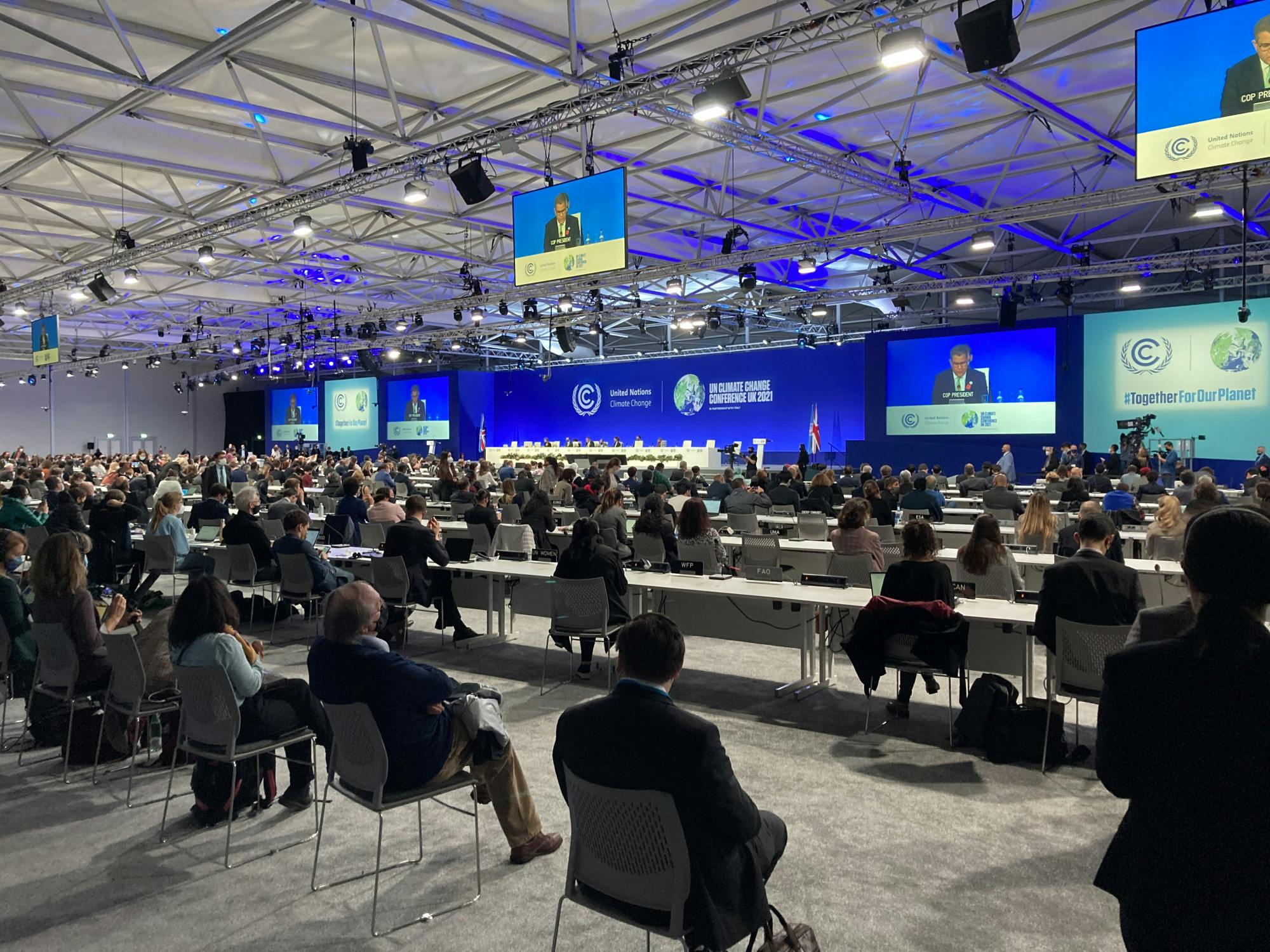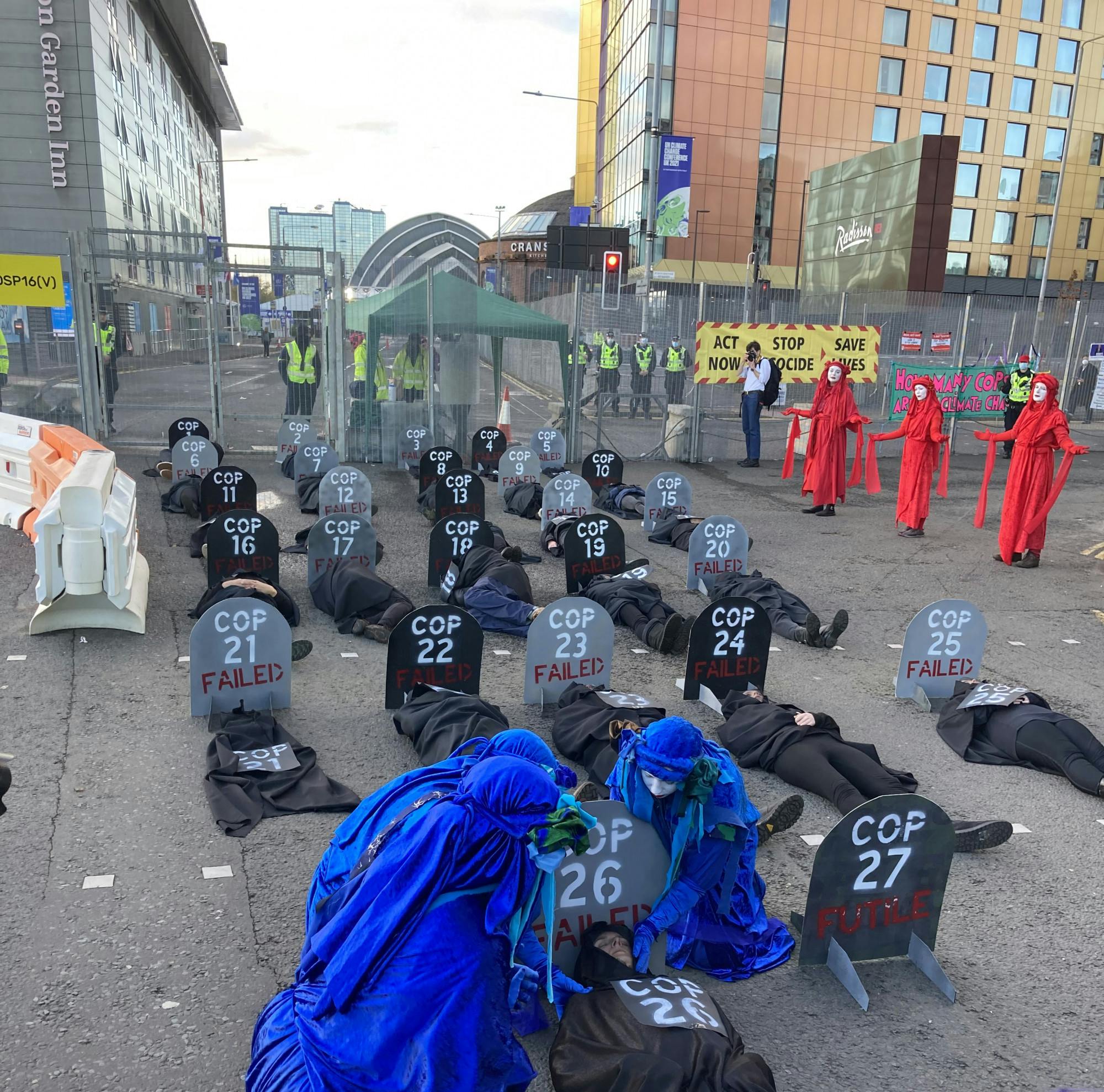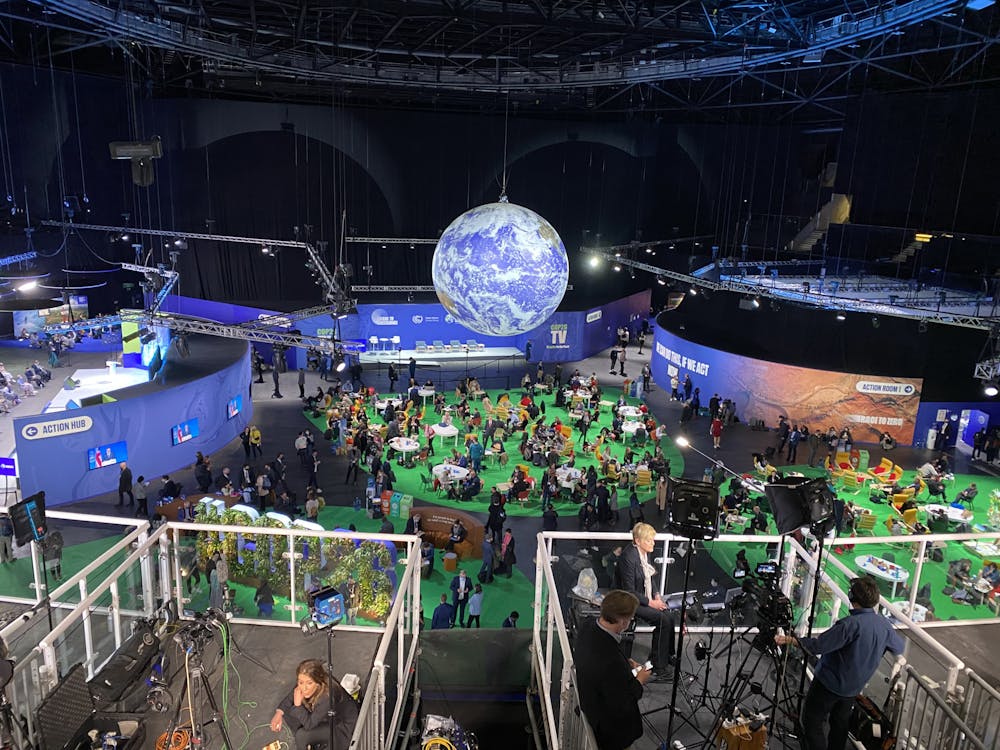Several members of the Brown community attended the 26th United Nations Climate Change Conference of the Parties in Glasgow over the course of the past two weeks. These activists and researchers shared their experiences and perspectives on the outcomes of the conference in interviews with The Herald.
The COP climate conferences, which have taken place nearly every year since 1995, bring together world leaders, scientists, activists, non-governmental organizations and civil society groups, as well as representatives of Indigenous communities and other stakeholders, to coordinate the global fight against climate change. This year’s COP was widely seen as the most important since COP21 in 2015, which produced the Paris Agreement. COP26, which was delayed for a year due to COVID-19, aimed to create a framework for implementing the Paris Agreement and to strengthen countries’ commitments to decarbonization.
Importance and urgency
A shared sense of running out of time, along with the trend of increasingly frequent climate disasters, lent an air of urgency to COP26, according to Danielle Falzon GS, who studies sociology and has been attending the conferences since 2016.
“This COP is important because it’s actually giving teeth to” the Paris Agreement, Falzon said. “We have to make actual decisions now and commit to things and figure out the real ways we’re going to take action to achieve the goals set out in Paris.”
The dire warnings in the Sixth Assessment Report, recently published by the Intergovernmental Panel on Climate Change, and the recent increase in climate change-fueled disasters gave COP26 a particular sense of urgency, Falzon said. She cited “the flooding we’ve seen all over the world, the unprecedented storms, the massive weather fluctuations — everything that’s made climate change a more tangible reality for people,” as well as the IPCC’s report, as reasons why COP26 was “really significant.”
“If we’re not going to take action now,” she said, “we’re already too late.”
Climate justice

Central to many of the negotiations was the importance of a just transition. This idea emphasizes the responsibility of wealthy nations to bear the greatest burden of decarbonization due to their disproportionate contributions to the climate crisis. Small island nations at risk of being flooded and Indigenous groups on the front lines of climate destruction worldwide urged those at the conference to create a Loss and Damage finance mechanism to support those already affected by climate change.
Zanagee Artis ’22, who co-founded the youth climate activist group Zero Hour and attended the conference, said that concrete policies to advance climate justice fell short. Those at COP26 “talked a lot about climate justice and the need for that, and a lot of it didn’t end up coming through in the final agreement,” he said. Although he said that the increase in discussions about Indigenous rights and human rights was important, more actionable progress was something “we didn’t come away with from COP26.”
“A lot more needs to be done, particularly related to Indigenous rights and the Loss and Damage function,” Artis said. “What COP26 really showed is that countries are unwilling to give up sovereignty for an increase in rights for Indigenous peoples. That’s resulted in an expansion of fossil fuel interests … on Indigenous lands, and reaching an agreement at COP could have changed that.”
Falzon added that Loss and Damage finance for these countries is a third crucial pillar of climate policy, alongside adapting to an already warming world and mitigating further warming. But a proposal to create a new Loss and Damage funding mechanism ultimately proved unsuccessful.
Emma Venarde ’24, who attended the conference as part of a youth delegation from the Wild Center, also emphasized the importance of women’s and Indigenous people’s rights in the fight against climate change. “We can’t let urgency mean we leave people out,” she said.
Inaccessibility and division
Compounding the concerns that COP26 did not adequately address climate justice was a common perception that the conference itself was inaccessible to many, Artis, Vernard and Falzon all said.
“This is one of the most exclusionary COPs,” Artis said, describing the difficulty of gaining access to closed-door meetings.
“This was a really inaccessible COP,” Venarde agreed, explaining that information about events was often extremely hard to come by. “Sometimes we would wait in line a really long time (for access to negotiations) only to be turned away.”
The difficulty of navigating COP26, several sources said, was only a small part of a broader exclusion of certain groups. The lack of accessibility, Venarde said, was “not only for observers and for youth but for Global South countries. Just getting (to Glasgow) was not doable for a lot of delegations.”
“I heard a lot of people say that there were two COPs going on: one where the scientists and activists are, and one where the leaders are, and they’re not really interacting,” she added.
Falzon also noted the lack of representation for many marginalized peoples. For example, she said, “the island nation of Vanuatu does not have a delegation because they were not able to get” to Glasgow due to challenges posed by COVID-19.
She added that “small island states typically only have three negotiators” who often end up dwarfed by the massive delegations sent by countries like the United States.
This inaccessibility for many groups most affected by the climate crisis contrasted with the over-representation of fossil fuel interests at the COP, Artis said. “There was news that fossil fuel interests actually had the biggest delegation … at the conference if you consider them as one bloc of people, which is wild. It was more than any country,” he said. “People causing climate change were part of the conference and (were) sponsoring it.”
Protests

This year’s COP also saw a significant number of protests in Glasgow, reflecting a growing sense of urgency and the perception that world leaders are not doing enough to address the climate crisis.
The protests were “huge,” said Deborah Gordon, a senior fellow at the Watson Institute of International and Public Affairs and former director of the Energy and Climate Program at the Carnegie Endowment for International Peace.
Venarde said that youth activism played a major role in the protest movement, and that some of the groups in attendance included the youth strike organization Fridays for Future and the civil disobedience-oriented group Extinction Rebellion. But one of the most significant protests, she said, happened not outside but inside the COP.
After “outrage about the lack of accessibility throughout COP,” she said, a number of constituencies of observers were granted a “People’s Plenary” on the last Friday of the conference to voice their frustration and concerns.
At the plenary, youth groups read from the IPCC Sixth Assessment Report, a choice Venarde called “really powerful.” The message to world leaders, she said, was simple: “It’s your turn to act.”
Afterward, the Indigenous constituency led the several-hundred person room in a walkout that marched through central negotiating areas to join protests outside, sending a message that “not enough work has been done here,” Venarde said.
“It was a really cool moment … There’s never been a demonstration that large inside of (the central COP zone) before,” she said. “It was really freeing to engage in that last (action) after a week of refraining from screaming.”
Reflections on COP26’s outcomes
Many, not only within the Brown community, but also among scientists, activists and leaders more broadly, agree that the conference did not accomplish enough.
“I don’t think we’re making the massive changes that are needed to actually do something substantive to limit average temperature rise to either 1.5 or 2 degrees (Celsius),” Falzon said. “I don’t think this COP is producing results that are going to do something like that.”
But she added that she saw small markers of progress. “There’s an urgency and seriousness that I haven’t really seen before at other COPs among all nations,” she said, adding that pledges to reduce deforestation and emissions of methane — a gas with a shorter lifespan but a much more potent greenhouse effect than carbon dioxide — represent steps forward. “Any action is good,” she said.
Gordon agreed, adding that COP26 spurred significant progress on establishing a framework for reducing methane emissions. “This is the first ever COP to focus beyond CO2,” she said.
“We are definitely driving to (a) 2.5 to 4 degrees (Celsius) temperature rise unless we deal with methane in this decade,” she said. Dealing with methane “could cut half a degree (Celsius) right away.”
Fortunately, Gordon said, the conference saw the announcement of the Global Methane Pledge, in which 107 countries pledged to slash their methane emissions by at least 30% before the end of the decade. Although implementation is always a difficult question, she added, the pledge and the methane reporting it requires represents a significant step in and of itself.
Venarde said that the movement against climate change must begin to look beyond events like COPs. “These big global negotiations are not what’s going to stop this crisis,” she said, emphasizing the need for local and community-based action. “There’s no one silver bullet solution to all of this.”
The conference helped Venarde to see that “the U.S. and world leaders are not going to save us … we’ve got to save ourselves,” she said. “I’m really frustrated by what I’ve witnessed, but that has to translate into action.”





